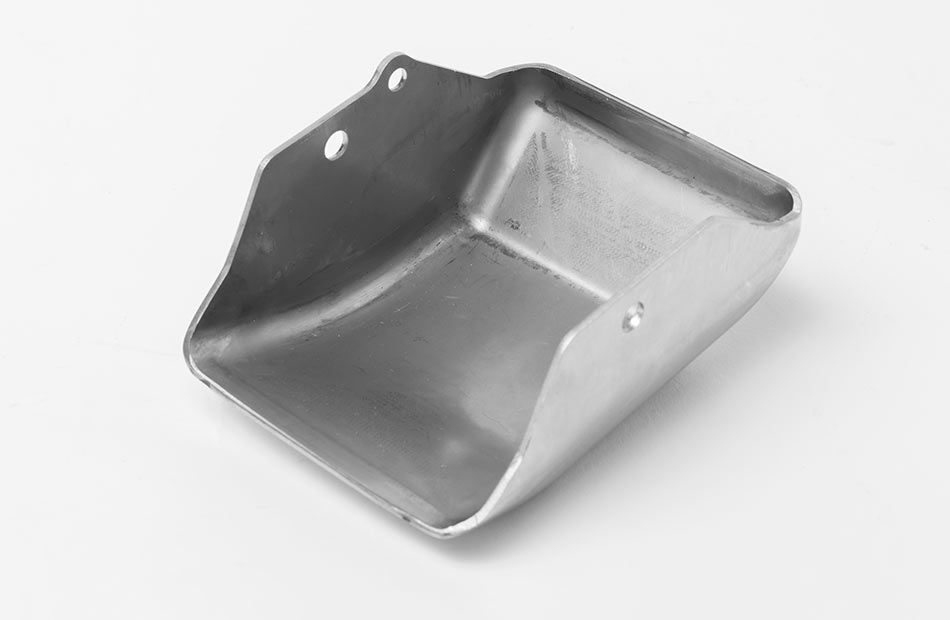Unlocking the Power of Steel Stamping: Approaches for Enhanced Product Growth
In the realm of production, the use of steel stamping holds a substantial area due to its adaptability and effectiveness in generating elaborate components and elements. The true potential of steel stamping stays untapped by several companies looking for to improve their product development processes. By checking out advanced approaches and techniques tailored to maximize style, product option, production effectiveness, and quality assurance, companies can open a wide range of chances to boost their products to new elevations of development and performance.
Advantages of Metal Stamping
Steel marking offers a economical and efficient approach for producing high-grade metal components. This production procedure entails shaping, cutting, or creating steel sheets using a stamping press (Metal Stamping). One of the essential benefits of metal marking is its ability to develop complex geometries with high accuracy and consistency. This is especially helpful for sectors such as vehicle, aerospace, and electronic devices, where detailed steel components are typically called for.
In addition, steel stamping allows for high-volume production, making it suitable for tasks that call for big quantities of metal components. The speed and repeatability of the stamping procedure not only make sure price savings but additionally add to faster turn-around times for production orders. In addition, making use of automated tools in metal marking aids decrease the danger of human error, leading to boosted total item high quality.

Layout Optimization Strategies
With cautious consideration of product properties and geometric configurations, style optimization methods play a crucial function in boosting the performance and performance of metal marking processes. By purposefully examining factors such as product stamina, density, and type, producers can customize the style to make best use of the efficiency of the marking procedure. Using simulation software, engineers can predict how various design variations will certainly behave under numerous stamping conditions, permitting the recognition of potential issues prior to manufacturing begins.
Moreover, integrating attributes like fillets, chamfers, and embosses into the design can boost the overall top quality of the stamped part while reducing the danger of flaws such as deforming or splitting. Furthermore, maximizing the design of features on the part can enhance the product circulation during marking, resulting in even more precise and constant outcomes.
Basically, design optimization methods allow producers to fine-tune their steel marking processes, resulting in improved item high quality, increased production efficiency, and inevitably, an extra affordable position out there.
Material Option Methods
Style optimization strategies in metal marking processes heavily depend on calculated product choice strategies to make sure the wanted performance and performance of the produced components. The option of product in metal marking is vital as it straight affects the high quality, resilience, and general functionality of the last product. When picking the proper material for a specific project, aspects such as mechanical properties, cost-effectiveness, formability, and rust resistance must be considered.

In addition, cost-effectiveness plays look these up a significant function in material option methods. Stabilizing the efficiency requirements with the total expense of materials is crucial to guarantee the financial feasibility of the production process. Additionally, considering aspects like recyclability and environmental effect can further boost the sustainability of the selected material. By meticulously examining these aspects, makers can enhance their material choice strategies to attain superior item top quality and operational effectiveness.
Enhancing Manufacturing Effectiveness
Performance in manufacturing procedures is a crucial element for making sure cost-effectiveness and timely distribution of high-grade steel stamped parts. To enhance production effectiveness in metal stamping, numerous approaches can be implemented.
Additionally, executing automation and robotics in steel marking procedures can dramatically increase performance and uniformity while minimizing labor costs. Automated systems can perform recurring jobs with high precision and rate, bring about improved manufacturing performance and greater outcome rates. Spending in contemporary marking tools with sophisticated attributes, such as servo-driven presses and quick die change systems, can further enhance production processes and reduce downtime.
Moreover, establishing clear interaction channels and cultivating cooperation between design, design, and manufacturing teams is crucial for recognizing prospective traffic jams and carrying out constant renovations in the production operations - Metal Stamping. By embracing lean production concepts and leveraging modern technology innovations, producers can open the full possibility of steel marking processes and accomplish better production effectiveness
Quality Assurance and Assessment Approaches
To make certain the constant manufacturing of top notch steel marked components, extensive quality control and assessment methods play a crucial role in verifying the accuracy and integrity of the production process. Quality control in steel stamping includes a collection of systematic checks and actions to guarantee that each component fulfills the specified demands. In addition, advanced modern technologies such as automated optical evaluation systems and coordinate gauging machines are progressively being made use of to improve the precision and performance of quality control processes in metal stamping.
Conclusion
In verdict, steel stamping offers various advantages such as cost-effectiveness, accuracy, and flexibility in product advancement. By implementing style optimization strategies, picking appropriate materials, and enhancing production efficiency, makers can accomplish greater top quality items with decreased preparations. Quality assurance and examination approaches play an important function in making certain the end products satisfy the called for criteria. Overall, opening the power of steel marking calls for a critical approach to improve item growth procedures.
Steel stamping offers a efficient and cost-effective approach for creating high-grade steel elements.Moreover, metal marking enables for high-volume production, making it perfect for projects that call for big quantities of steel parts.Via mindful consideration of product homes and geometric setups, design optimization techniques play an essential duty in improving the click for source efficiency and performance read of metal marking procedures.Style optimization techniques in metal stamping procedures greatly depend on tactical product choice techniques to guarantee the desired performance and performance of the produced components. The choice of product in steel stamping is important as it straight influences the high quality, durability, and general capability of the final product.